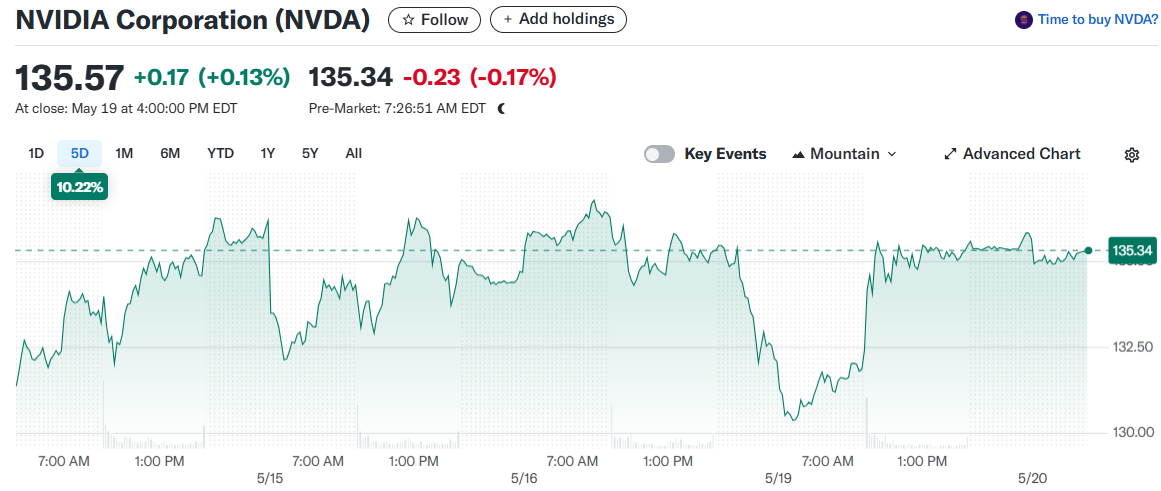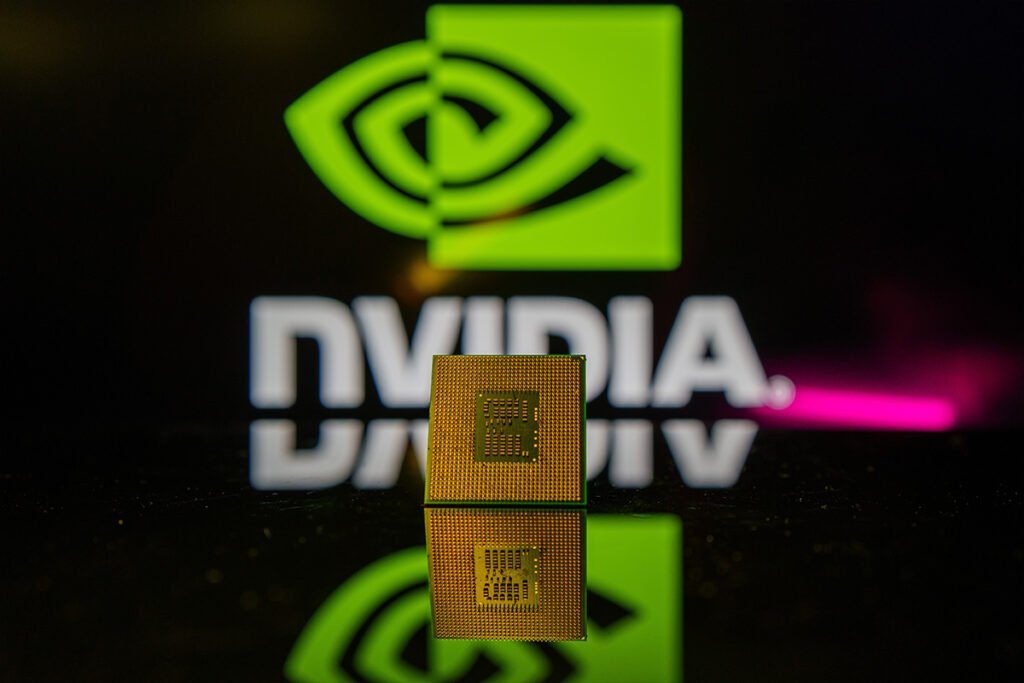TLDR:
- Nvidia shares fell 0.3% to $135.22 in Tuesday premarket trading
- CEO Jensen Huang announced opening AI server technology to competitors
- China export restrictions expected to cost company $15 billion, higher than previous estimates
- Citi maintained Buy rating with $150 price target after Computex keynote
- GB300 chips confirmed for third quarter 2025 shipping timeline
Nvidia’s stock took a slight dip in Tuesday’s premarket session as investors digested mixed news about the chip powerhouse. Shares of the AI titan dropped 0.3% to $135.22 while broader market indicators also showed weakness.
The company made waves after CEO Jensen Huang revealed plans to open Nvidia’s AI server platform to competing chip manufacturers. This unexpected move could open new revenue streams for the tech giant.
William Blair analyst Sebastien Neji views this as a strategic positioning. He believes Nvidia is “cementing itself further inside of AI racks” despite industry shifts toward multi-vendor sourcing.
Neji keeps an Outperform rating on the stock.
But it wasn’t all positive news for Nvidia investors. The company faces growing headwinds from US government restrictions on chip sales to China.

The China Challenge
In an interview with tech newsletter Stratechery, Huang disclosed that limitations on selling H20 chips to Chinese customers would reduce revenue by $15 billion. This figure exceeds earlier Jefferies analyst projections of $10 billion.
The export limitations come at a time when Nvidia has been working to expand its market presence globally. These restrictions represent a substantial obstacle to the company’s growth plans in Asia.
Despite these challenges, Wall Street remains largely optimistic about Nvidia’s prospects. Citi analyst Atif Malik reiterated a Buy rating on the stock Tuesday.
Malik kept his $150 price target intact following Huang’s Sunday keynote at the Computex conference in Taipei. The analyst highlighted three key announcements from the event.
First was the unveiling of NVLink Fusion technology. Second came advancements in physical AI with Nvidia’s Isaac GR00T N1.5 foundation model. The third announcement introduced enterprise-grade RTX PRO 6000 Blackwell servers.
These innovations represent Nvidia’s strategy to grow its addressable market. The company aims to gain footholds in emerging sectors while strengthening its position in AI infrastructure.
Production Roadmap
Another important update came regarding Nvidia’s production timeline. The company confirmed its GB300 chips will begin shipping in this year’s third quarter.
This schedule aligns with Citi’s expectations. Their models predict approximately 1 million GB300 units entering the market during calendar year 2025.
This translates to around 15,000 GB300 NVL servers being deployed. These projections match Citi’s research findings from Asia.
Nvidia continues to forge international partnerships despite trade tensions. The company has teamed with Foxconn and Taiwan’s government to construct a new supercomputer.
Analyst opinions on Nvidia’s future remain mixed but generally positive. Morgan Stanley reiterated an Overweight rating, emphasizing the importance of NVLink Fusion and RTX PRO servers.
BofA Securities maintained its Buy rating. The firm pointed to Nvidia’s expanding AI product portfolio and potential benefits from Middle East deals.
Not everyone shares the bullish outlook. Raymond James reaffirmed an Underperform rating on Nvidia stock. They cited concerns about the H20 export restriction impact on revenue growth.
